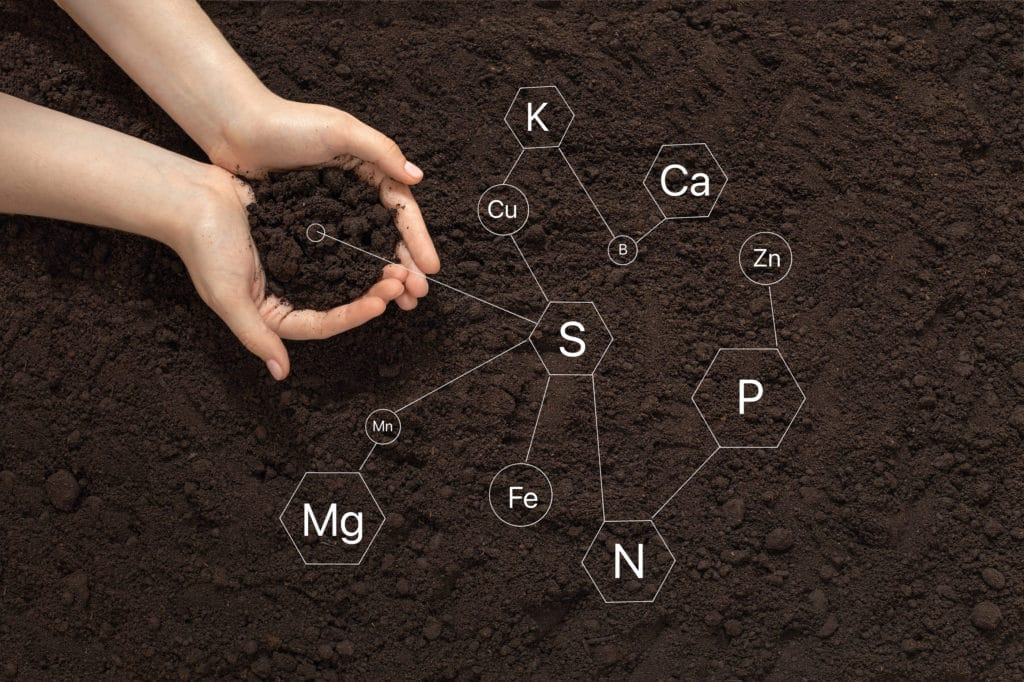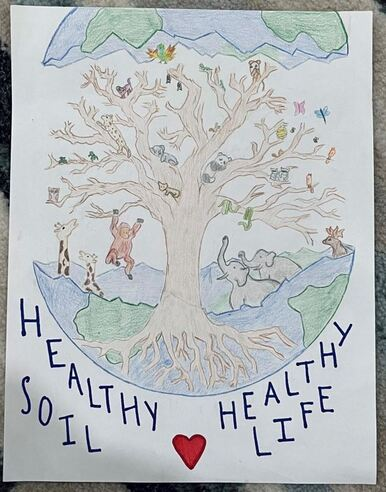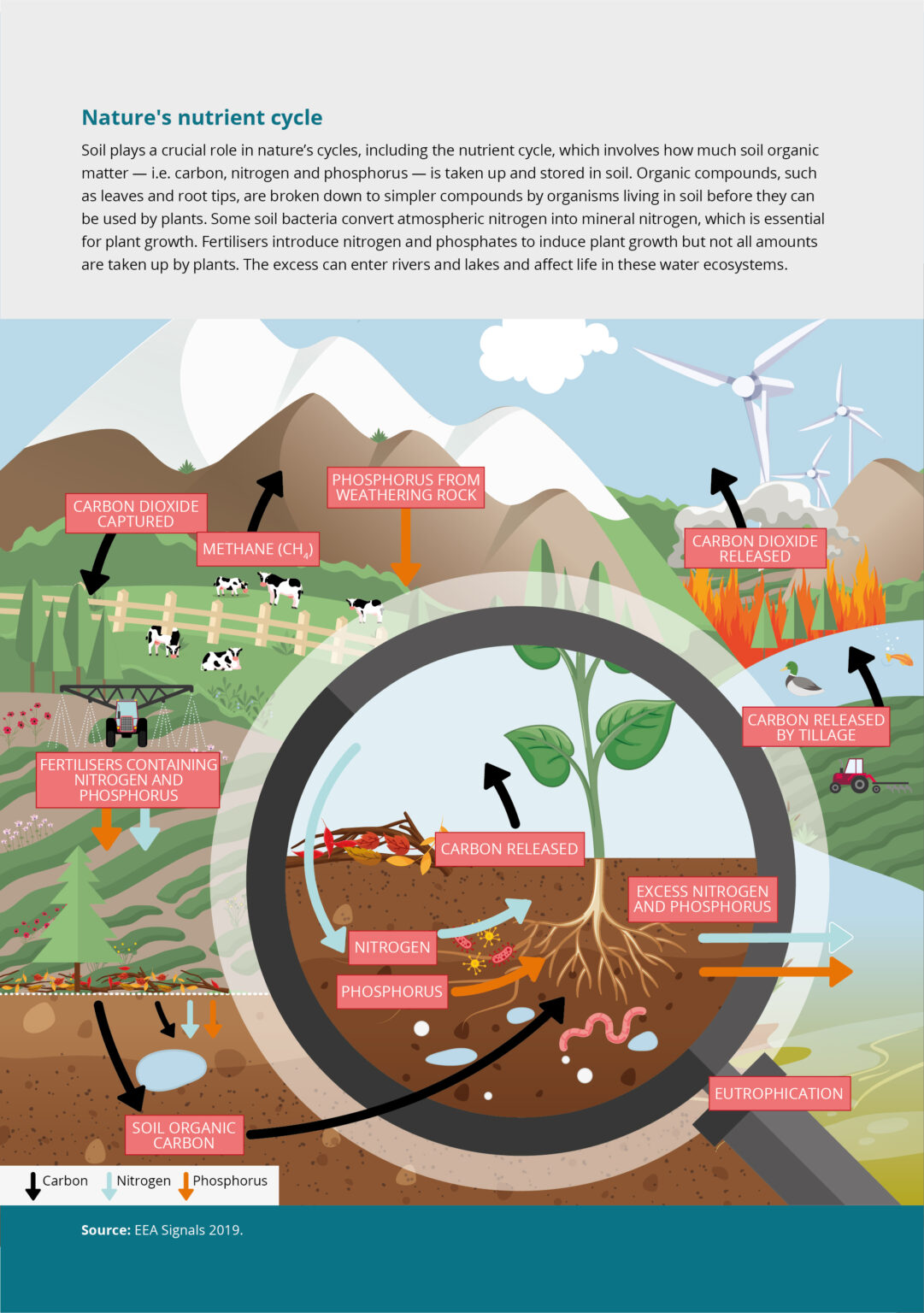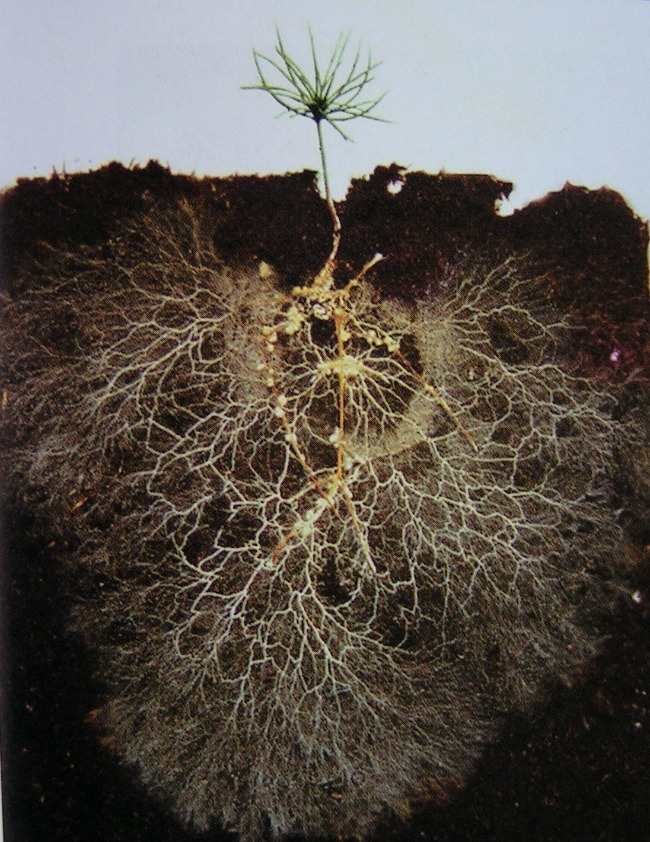Soil Health Program
Why Are Soils Important?

Diagram: Soil Layers

- O) Hummus: It is the fraction of soil organic matter and significantly influences the bulk density of soil and contributes to moisture and nutrient retention.
- A) Topsoil: It is the outermost layer of soil and has highest concentration of organic matter and microorganisms
- E) Eluviation Layer: It is the transport layer of soil material from upper layers of soil (topsoil) to lower levels (subsoil)
- B) Subsoil: It is the layer of soil under the eluviation layer whick is composed of variable mixture such as sand, silt, and/or clay
- C) Regolith: It is a layer of loose which includes dust, soil, broken rock and other related materials
- R) Bedrock: It is the lithified rock that lies under a loose softer material)
Healthy Soil, Healthy Life

Why Should We Care?
Soil is an extremely important resource for humans, animals, fungus, and plants alike. It is estimated that 95% of our food is either directly or indirectly reliant upon soil. Soils maintain biodiversity for millions of species, and help sequester carbon. It can help improve water quality by reducing the amount of sediments and nutrients that enter streams. Water can be cooled and stored in soils during times of flooding or precipitation and re-released during dryer periods. Healthy soils are often times taken for granted, but through education, collaboration, and good agricultural techniques we can ensure the health of our soil and all the benefits that it provides.
Natures Nutrient Cycle

Soil plays a crucial role in nature's cycles, including the nutrient cycle, which involves how much soil organic matter - i.e. carbon, nitrogen and phosphorus - is taken up and stored in soil. Organic compounds, such as leaves and root tips, are broken down to simpler compounds by organisms living in soil before they can be used by plants. Some soil bacteria convert atmospheric nitrogen into mineral nitrogen, which is essential for plant growth. Fertilisers introduce nitrogen and phosphates to induce plant growth but not all amounts are taken up by plants. The excess can enter rivers and lakes and affect life in these water ecosystems.)
Unhealthy soil can result in agricultural, ecological, cultural, and environmental issues.
Over the course of the last century many agricultural soils around the world have lost 40-60% of their organic carbon. A common issue found locally in Columbia County is declining pH rates that can cause reduced yields, decreased water quality, decreased biodiversity, and other potential and significant impacts. The Columbia Conservation District (CCD) is working with landowners to better understand why this is happening, to recognize the impacts, and to explore different approaches to help improve soil health.

CCD has been working alongside partners from WSU Extension, to investigate the problems, evaluate solutions, implement opportunities, and adapt to the outcomes.
The Soil pH and Nutrients project began in 2013, with roughly 30 landowners involved in applying lime to the fields.
After a 5 year study, observations led us to understand that the amounts initially applied were not enough. After more research, a sub-project emerged, which included looking at the soil from a more wholistic manner utilizing the Kinsey Agricultural Services, to apply not only lime but any Macro and Micro-nutrients needed to balance the soil from all sides. This project is currently on a field separate from the initial project fields, is roughly 60 acres in size and is located 5 minutes outside of Dayton in the heartland of the foothills to the Blues Mountains.
CCD, along with partners, are hopeful in providing the data necessary to combat the current and future issues within the soil.
For more information about the districts soil project, and programs available to help your soil problems, please call or email Aneesha Dieu, District Manager. Information can be found in the contacts page.
Together we can realize the solutions towards sustaining fruitful soils and preserving the balance of nature.
